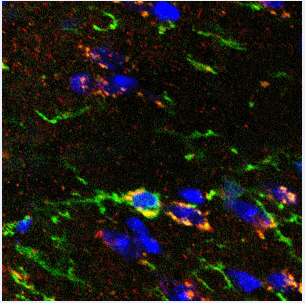기술동향
The aging stem cell
- 등록일2010-07-02
- 조회수9827
- 분류기술동향
-
자료발간일
2010-07-02
-
출처
RIKEN RESEARCH
- 원문링크
-
키워드
#stem cell
The aging stem cell
The discovery that secreted protein Ecrg4 slows neural precursor cell division during aging could point the way to treatments for age-related diseases
Stem cells and precursor cells can proliferate to repopulate damaged tissues. During aging, however, these cells lose their ability to divide-a process that is called senescence. Now, a team of researchers led by Toru Kondo at the RIKEN Center for Developmental Biology, Kobe, has identified esophageal cancer-related gene 4 (Ecrg4) as being responsible for senescence of precursor cells in the central nervous system during aging1. This finding could explain why neurodegenerative diseases, such as Alzheimer's disease, are prevalent in elderly individuals.
Addition of serum to oligodendrocyte precursor cells (OPCs) in culture drives them toward a senescent phenotype, making them an ideal model system to study genes that induce senescence. Kondo and colleagues looked at s in gene expression during induction of senescence in mouse OPCs and found that the expression of Ecrg4 increased the most in senescent OPCs.
When the researchers overexpressed Ecrg4 in rat OPCs, this arrested the cell cycle, and increased the proportion of cells that were labeled by a marker of cell senescence. The protein Ecrg4 seemed to act by inducing the degradation of proteins called cyclins, which drive cell cycle progression. When they reduced Ecrg4 expression, it blocked the induction of OPC senescence that is normally induced by serum.

Figure 1: The protein Ecrg4 (red) is expressed in oligodendrocyte progenitor cells (green) in the brain of aged, but not young, mice indicating that it is involved in inducing the senescence of these cells during aging.
In the culture medium of OPCs that were already senescent, Kondo and colleagues found that Ecrg4 protein was present. Administering recombinant Ecrg4 protein onto OPCs in culture also induced senescence, suggesting that Ecrg4 is a secreted protein that drives OPC senescence.
They also observed that Ecrg4 was highly expressed in the brains of old-but not young-mice, in brain regions rich with neural precursor cells and OPCs (Fig. 1). Further, they found that the cells expressing Ecrg4 in the aging brain were not proliferating. In fact, Ecrg4-expressing cells in the aging brain seemed to be senescent, since they were co-labeled with a senescence marker. “An important next step in this research,” says Kondo, “is to make Ecrg4 knockout mice to examine the functions of Ecrg4 in vivo.”
Identifying factors that drive neural precursor cell senescence may one day lead to therapies that can kick- their proliferation that has stalled during aging, which could help restore neuronal loss in diseases such as stroke or Parkinson's disease. “Our findings provide a new clue to investigate the mechanism of brain aging,” explains Kondo, “and may lead to the development of new methods to prevent aging and age-related diseases.”
The corresponding author for this highlight is based at the Laboratory for Cell Lineage Modulation, RIKEN Center for Developmental Biology
1. Kujuro, Y., Suzuki, N. & Kondo, T. Esophageal cancer-related gene 4 is a secreted inducer of cell senescence expressed by aged CNS precursor cells. Proceedings of the National Academy of Science USA 107, 8259?8264 (2010). article
지식
동향
- 기술동향 SY-Stem (Symposium for the next generation of stem cell researchers) 참석 후기 2019-05-21
- 기술동향 말초신경계 신경능선세포 관련 연구 동향 2017-06-08
- 기술동향 조혈줄기세포(Haematopoietic stem cell) 생성을 위한 연구 진척 2016-12-01
- 기술동향 Stem cells thrive on superficial relationships 2012-08-13
- 기술동향 Great leap forward for regenerative medicine 2012-03-05

